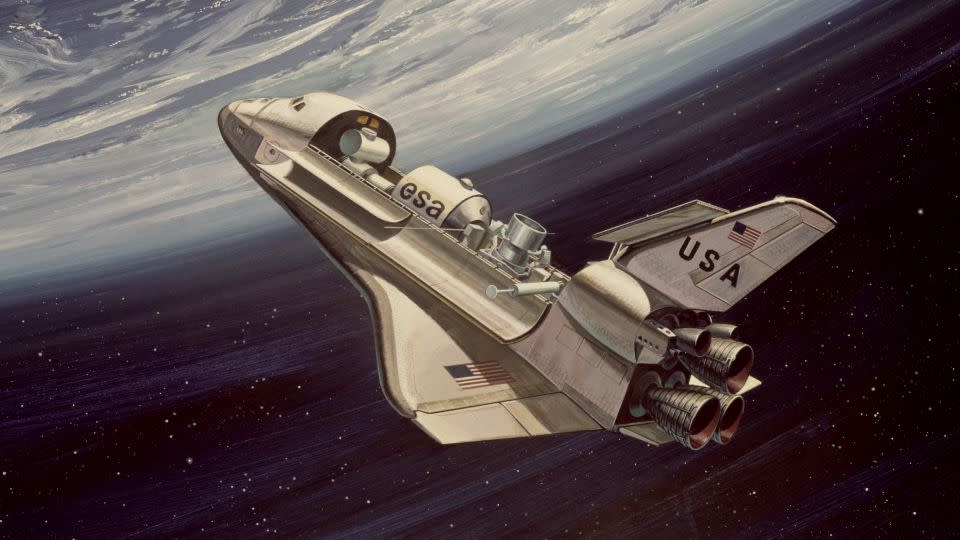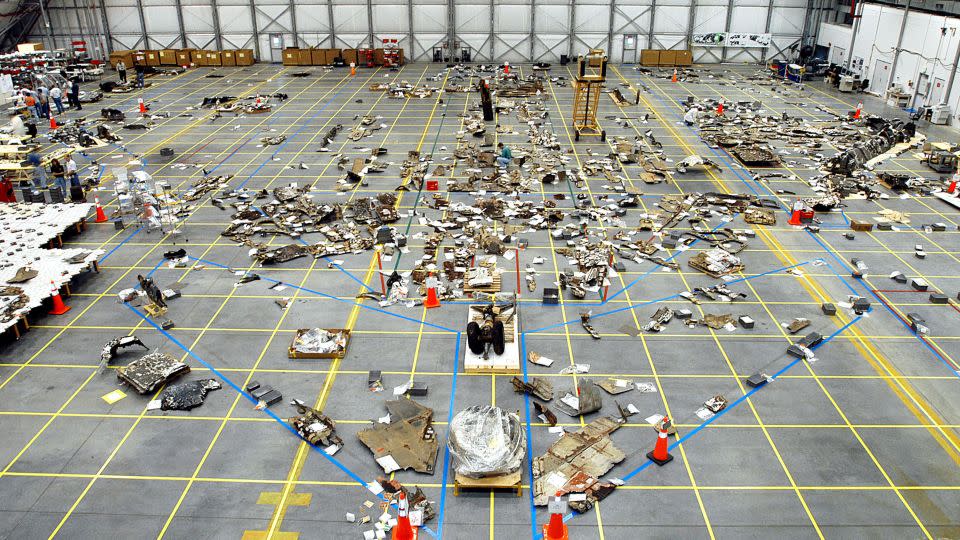The space shuttle was revolutionary for its time. What went wrong?
The CNN Original Series “Space Shuttle Columbia: The Final Flight” uncovers the events that ultimately led to disaster. The four-part documentary concludes at 9 p.m. ET/PT Sunday.
Upon its inception, NASA’s space shuttle program promised to usher in a new era of exploration, keeping astronauts space-bound with a reusable and relatively cheap ride into orbit. It was a project that forever altered the course of spaceflight with its triumphs — and its tragic failures.
Deemed an “engineering marvel,” the first of five winged orbiters — the space shuttle Columbia — made its inaugural flight in 1981.
Twenty-two years and 28 trips to space later, the same shuttle broke apart during its final return to Earth, killing all seven crew members on board.
The tragedy spelled the end for the US space agency’s transformative shuttle program. And its memory continues to reverberate in the halls of NASA today, leaving a lasting mark on its consideration of safety.
“Human history teaches us that in exploration, after accidents like this occur, we can learn from them and further reduce risk, although we must honestly admit that risks can never be eliminated,” said then-NASA Administrator Sean O’Keefe, who ran the agency from 2001 to 2004, in a speech before members of Congress shortly after the Columbia disaster.
After the shuttle program was retired, no US astronaut would travel to space on an American-made rocket for nearly a decade.
Reimagining rocketry
The space shuttle project was forged in the optimism of NASA’s Apollo program, which landed 12 astronauts on the surface of the moon and bested America’s Soviet rivals during the Cold War.
Apollo was, however, extraordinarily expensive: NASA spent $25.8 billion (or more than $200 billion when adjusted for inflation) — according to a cost analysis from space policy expert Casey Dreier of the nonprofit Planetary Society.
With financial constraints on the horizon, by the mid-1970s, engineers within NASA were building an entirely new means of space transportation.

Apollo used towering rockets and small capsules — destined to be flown just once — that would plunge back home from space and parachute to an ocean landing.
The space shuttle concept was a remarkable pivot: Reusable, winged orbiters would take off strapped to rockets, sail through Earth’s orbit and glide to an airplane-esque runway landing. From there, the shuttle could be refurbished and flown again, theoretically driving down the cost of each mission.
Shuttle’s legacy
Over the course of three decades, NASA’s fleet of space shuttles flew 135 missions — launching and repairing satellites, building a permanent home for astronauts with the International Space Station and commissioning the revolutionary Hubble Space Telescope.
But the shuttle program, which ended in 2011, never lived up to the US space agency’s initial vision.
Each shuttle launch cost about $1.5 billion on average, according to a 2018 paper from a researcher at NASA’s Ames Research Center. That’s hundreds of millions of dollars more than what the space agency had hoped for at the program’s outset, even when adjusted for inflation. Long delays and technical setbacks also beleaguered its missions.
“Every single mission that I was there for was scrubbed, rescheduled, delayed because something wasn’t exactly right,” said O’Keefe, the former NASA administrator, in a new CNN documentary series, “Space Shuttle Columbia: The Final Flight.”
And two disasters — the Challenger explosion in 1986 and the loss of Columbia in 2003 — cost the lives of 14 astronauts.
The Columbia disaster: Looking back
On the morning of February 1, 2003, the Columbia orbiter was heading home from a 16-day mission to space.
The seven-person crew on board had carried out dozens of science experiments while in orbit, and the astronauts were slated to land at 9:16 a.m. ET in Florida.
unknown content item
-
NASA engineers knew that a piece of foam — used to insulate the shuttle’s large, orange fuel tank — had broken off during the January 16 launch, striking the Columbia orbiter.
The space agency’s stance, however, was that the lightweight insulation material likely didn’t cause significant harm. Some foam had broken off on earlier missions and caused slight damage, but it was deemed an “accepted flight risk,” according to the official Columbia accident investigation report.
It was later revealed, however, that concerns about the foam’s impact were swept under the rug by NASA management, according to previous reporting and “Space Shuttle Columbia: The Final Flight.”
“I was very upset and angry and disappointed with my engineering organizations, top to bottom,” said Rodney Rocha, a chief NASA shuttle engineer, in the new series.
The astronauts even received an email from mission control alerting them about the foam strike on the eighth day of their mission, reassuring them there was no reason for alarm, according to NASA.
But the assumption was wrong.
An investigation later revealed the dislodged foam had struck Columbia’s left wing during launch, damaging the spacecraft’s thermal protection system.
The issue didn’t affect crew members while they spent more than two weeks in space.
But heat protection is crucial for the dangerous return home. As with every mission that returns from orbit, the vehicle had to dive back into the thick of the Earth’s atmosphere while still traveling at more than 17,000 miles per hour (27,359 kilometers per hour). The pressure and friction on a spacecraft can heat up the exterior to 3,000 degrees Fahrenheit (1,649 degrees Celsius).
Reentry proved too much for the damaged Columbia shuttle. As the vehicle approached its destination, crossing over New Mexico into Texas, the orbiter began to disintegrate — visibly shedding chunks of debris.
At 8:59 a.m. ET, ground controllers lost contact with the crew.
The final dispatch came from mission commander Rick Husband, who said, “Roger, uh,” before he was cut off.
At 9 a.m., onlookers saw Columbia explode over East Texas and watched in horror as it showered the area with debris.

The realities of risk
Two decades later, the Columbia tragedy and the broader shuttle program offer crucial perspective about the perils and triumphs of spaceflight.
NASA entered the era confidently, anticipating that the odds of a shuttle being destroyed during flight were around 1 in 100,000.
The space agency reevaluated that risk, estimating after the Challenger disaster that the shuttle had carried a 1 in 100 chance of disaster.
“If somebody told me, ‘Hey, you can go on this roller coaster ride, and there’s a 1 in 100 chance that you’ll die. Well, there’s no chance in the world — no chance in hell — I would do that,” US Sen. Mark Kelly, a former NASA space shuttle astronaut, told “The Final Flight” documentarians.
“But I also think that people generally think it’s not going to be them,” Kelly added.
Sign up for CNN’s Wonder Theory science newsletter. Explore the universe with news on fascinating discoveries, scientific advancements and more.
For more CNN news and newsletters create an account at CNN.com

